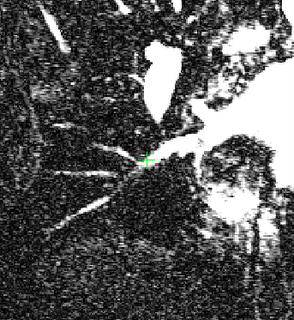I have been stuck for about a couple of weeks trying to get rid of this error
vtkVolumeRayCastMapper Cannot volume render data of type short, only unsigned char
or unsigned short.
that I have been getting when I was trying to MIP render a GIPL image. I was finally able to resolve the issue, with Prof. Daniel's help. I have looked around the web for a solution, and all of the solutions that I have looked at didnt help. Infact, people working with ITK (Insight ITK) commonly face this problem when they are trying to render an ITK image.
The solution is simple, only if you knew the vtk classes inside out. Anyone would have guessed what needs to be done here: we simply need to make sure that the scalar values we have in our vtk data set (vtkStructuredPoints for e.g.) are non-negative values. Well, if you have negative values, you want to make sure that you can scale them back to the set of positive real numbers. The way you do this is by first determining the minimum and maximum of your scalar values and then setting the minimum to be 0. So if -5 is the minimum, you set it to zero and add all the other scalars by 5. Once you have non-negative values, all you now have to do is pass the vtk data through a small
pipeline. A pipeline is an important concept which I learned about today. Most VTK textbooks have this explained well. What it really is that the output of a filter becomes the input of another filter, and this is done by using common vtk functions such SetInput and GetOutput. Going back to our discussion, once we have non-negative values, we need to cast and make sure that we can safely cast. If you have scaled your scalars properly, it should be a safe cast.
vtkImageCast *vtkImageCast = vtkImageCast::New();
vtkImageCast->SetInput(vtkImage);
vtkImageCast->SetOutputScalarTypeToUnsignedShort();
....... // somewhere down the line ...
volumeMapper->SetInput(vtkImageCast->GetOutput());
As you can see, a new vtkImageCast object casts the vtkStructuredPoints vtkImage object's scalar values to unsigned short and then the GetOutput function is called to feed the output to the renderer.

